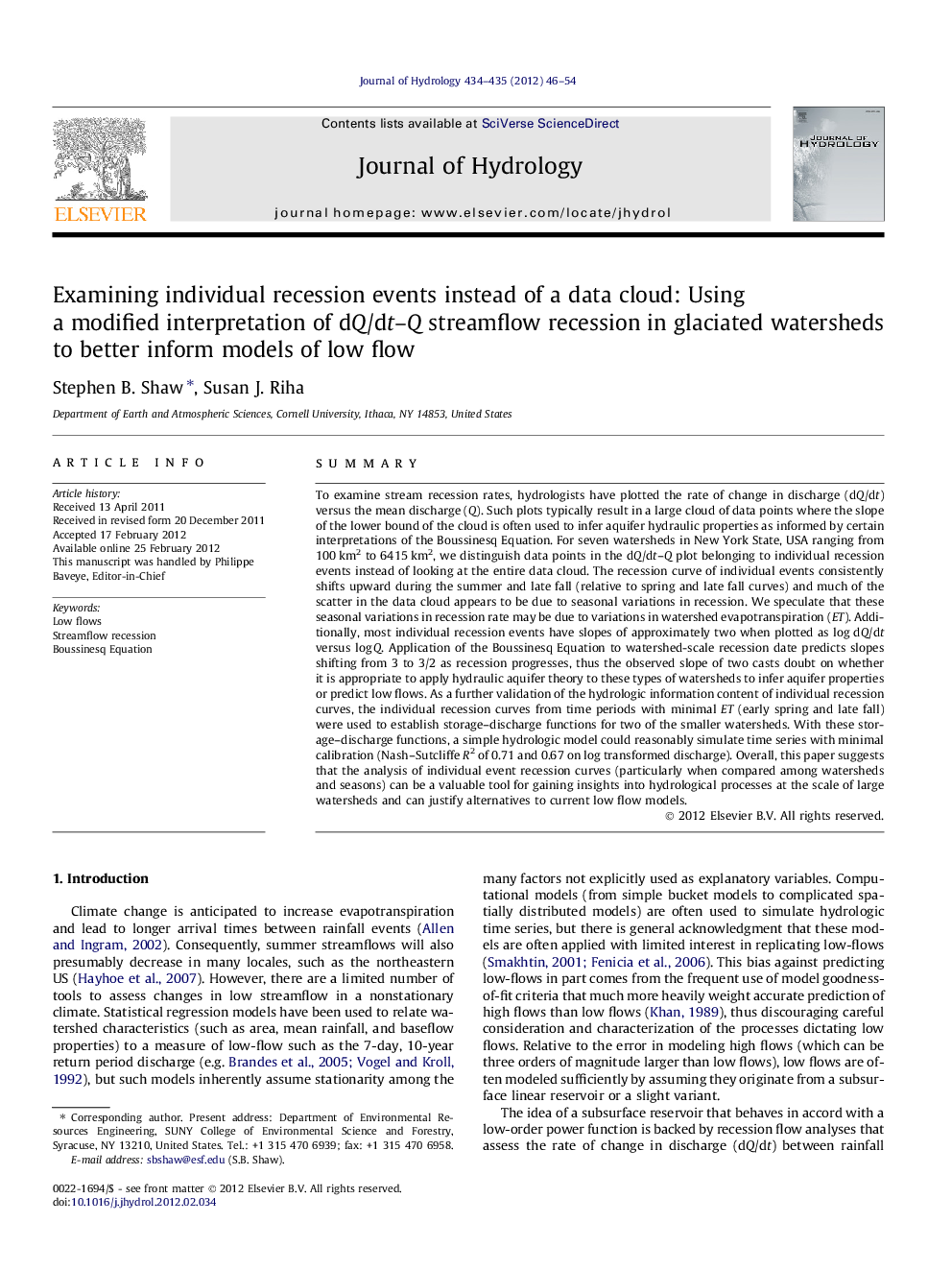| کد مقاله | کد نشریه | سال انتشار | مقاله انگلیسی | نسخه تمام متن |
|---|---|---|---|---|
| 4577011 | 1629994 | 2012 | 9 صفحه PDF | دانلود رایگان |

SummaryTo examine stream recession rates, hydrologists have plotted the rate of change in discharge (dQ/dt) versus the mean discharge (Q). Such plots typically result in a large cloud of data points where the slope of the lower bound of the cloud is often used to infer aquifer hydraulic properties as informed by certain interpretations of the Boussinesq Equation. For seven watersheds in New York State, USA ranging from 100 km2 to 6415 km2, we distinguish data points in the dQ/dt–Q plot belonging to individual recession events instead of looking at the entire data cloud. The recession curve of individual events consistently shifts upward during the summer and late fall (relative to spring and late fall curves) and much of the scatter in the data cloud appears to be due to seasonal variations in recession. We speculate that these seasonal variations in recession rate may be due to variations in watershed evapotranspiration (ET). Additionally, most individual recession events have slopes of approximately two when plotted as log dQ/dt versus log Q. Application of the Boussinesq Equation to watershed-scale recession date predicts slopes shifting from 3 to 3/2 as recession progresses, thus the observed slope of two casts doubt on whether it is appropriate to apply hydraulic aquifer theory to these types of watersheds to infer aquifer properties or predict low flows. As a further validation of the hydrologic information content of individual recession curves, the individual recession curves from time periods with minimal ET (early spring and late fall) were used to establish storage–discharge functions for two of the smaller watersheds. With these storage–discharge functions, a simple hydrologic model could reasonably simulate time series with minimal calibration (Nash–Sutcliffe R2 of 0.71 and 0.67 on log transformed discharge). Overall, this paper suggests that the analysis of individual event recession curves (particularly when compared among watersheds and seasons) can be a valuable tool for gaining insights into hydrological processes at the scale of large watersheds and can justify alternatives to current low flow models.
Figure optionsDownload as PowerPoint slideHighlights
► ET has traditionally been ignored when analyzing stream recession data.
► When applying dQ/dt–Q method, scatter in the data cloud can potentially be attributed to ET.
► dQ/dt–Q plots best analyzed by assessing curves of distinct recession events.
► This is in contrast to assessing boundaries of entire data cloud.
Journal: Journal of Hydrology - Volumes 434–435, 20 April 2012, Pages 46–54